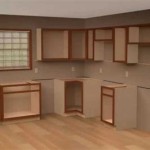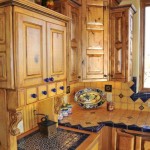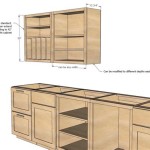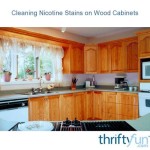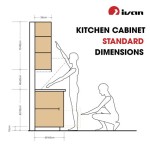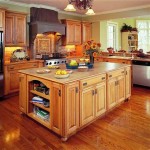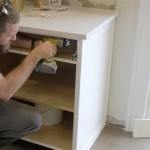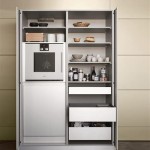Essential Aspects of Marine Kitchen Cabinets: A Comprehensive Guide for Enhanced Functionality and Durability
When it comes to marine environments, the selection of appropriate kitchen cabinets is crucial for ensuring both functionality and longevity. Unlike traditional kitchen cabinets, marine-grade cabinets are specifically designed to withstand the harsh conditions encountered onboard vessels, where exposure to moisture, salt, and extreme temperatures can pose significant challenges.
In this comprehensive guide, we will delve into the essential aspects of marine kitchen cabinets, covering their unique characteristics, materials, construction techniques, and additional considerations for enhanced performance and durability. By understanding these factors, you can make informed decisions when selecting marine kitchen cabinets that meet your specific needs and provide lasting value.
1. Materials: Durability and Resistance
The materials used in marine kitchen cabinets play a vital role in their ability to withstand the harsh marine environment. Durable and resistant materials such as high-quality marine-grade stainless steel, solid wood, and composite materials are commonly employed. These materials offer excellent corrosion resistance, water repellence, and durability, ensuring that your cabinets can endure the challenging conditions onboard.
Marine-grade stainless steel is particularly well-suited for marine kitchen cabinets due to its exceptional strength, corrosion resistance, and easy maintenance. Solid wood, such as teak, mahogany, and oak, provides a classic and warm aesthetic while offering good durability and water resistance when treated appropriately.
2. Construction: Robust and Secure
The construction of marine kitchen cabinets must be robust and secure to withstand the vibrations, movement, and potential impact encountered on a vessel. Cabinets should be firmly mounted using sturdy fasteners and reinforced with supporting structures to prevent loosening or damage. Dovetail joints, mortise and tenon joints, and other traditional woodworking techniques are often employed to ensure durability and longevity.
Drawer slides and hinges should be heavy-duty and designed specifically for marine applications. They should be corrosion-resistant and capable of withstanding repeated use in a salt-laden environment. Soft-closing mechanisms can minimize noise and prevent jarring movements, further enhancing the longevity of the cabinets.
3. Functionality: Optimized Design
Functionality is paramount in marine kitchen design. Cabinets should be well-organized and provide ample storage space, utilizing drawers, shelves, and compartments efficiently. Adjustable shelves and dividers allow for customization and flexibility in accommodating different items. Consider incorporating specialized storage solutions for marine utensils, cookware, and other equipment to maximize functionality and convenience.
Access to the cabinets should be effortless, even in challenging sea conditions. Latching mechanisms should be secure and easy to operate, ensuring that items remain securely stored. Proper ventilation is also essential to prevent moisture accumulation and promote airflow, especially in humid marine environments.
4. Aesthetics: A Balance of Form and Function
While functionality is essential, marine kitchen cabinets should also complement the overall aesthetic of your vessel. The choice of materials, colors, and finishes can significantly impact the ambiance and style of your kitchen. Consider the existing interior design and choose finishes that blend seamlessly while adding a touch of elegance.
For a classic and timeless look, opt for natural wood tones or painted finishes in neutral colors. If you prefer a modern and sophisticated aesthetic, consider sleek materials such as stainless steel or high-gloss finishes in bold hues. Ultimately, the choice of aesthetics is a personal preference that should reflect your taste and the overall design of your vessel.
5. Additional Considerations: Safety and Maintenance
When selecting marine kitchen cabinets, there are a few additional considerations for enhanced safety and ease of maintenance. Non-slip surfaces can minimize the risk of accidents in wet or slippery conditions. In areas where food preparation occurs, choose materials that are food-safe and easy to clean to maintain hygiene and prevent contamination.
Regular maintenance is essential to preserve the longevity of your marine kitchen cabinets. Periodic cleaning, inspection, and lubrication of moving parts will ensure smooth operation and prevent premature wear and tear. Invest in quality hardware and fittings that are specifically designed for marine use, as they are more likely to withstand the harsh environment and provide lasting value.
Conclusion
The selection of marine kitchen cabinets is a crucial decision that can significantly enhance the functionality, durability, and overall ambiance of your vessel. By understanding the essential aspects discussed in this guide, you can make informed choices that meet your specific needs and provide lasting value. Consider the materials, construction, functionality, aesthetics, and additional safety and maintenance factors to ensure that your marine kitchen cabinets not only serve their purpose but also contribute to the overall comfort and enjoyment of your time spent at sea.

Hockley Super Matt Marine Blue Kitchen Dark Kitchens Beige

Wakefield Classic Shaker In Marine Kitchen Stori

Blue Cabinets Express

Georgia Shaker Kitchen In Marine Stori

Marine Blue Shaker Cabinets Tagged Sample Door

Chelford Paintable Marine Blue Kitchen Grey Cupboards Traditional Design

Elmbridge Paintable Marine Blue Kitchen Cupboards Room Design White Units

Marine Ply Laminate Kitchen

Marine Plywood Residential Kitchen Cabinet

10 Marine Ply Kitchen Ideas Plywood Interior Inspirations
Related Posts

